
HOME
INTRO
SYMBOLS
ALMANAC
ECONOMY
GEOGRAPHY
STATE MAPS
PEOPLE
FORUM
NEWS
COOL SCHOOLS
STATE QUIZ
STATE LINKS
BOOK STORE
MARKETPLACE
NETSTATE.STORE
NETSTATE.MALL
GUESTBOOK
CONTACT US


Dbl click any word in
document for definition.
Texas State Native Shrub
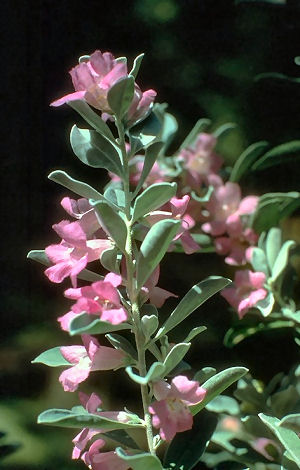
Texas State Native Shrub: Texas Purple Sage
Clarence A. Rechenthin @ USDA-NRCS PLANTS Database
A botanist is a scientist who specializes in the study of plants.
Some years ago Thomas Adams, botanist and member of the Native Plant Society of Texas, noticed that the official state shrub of Texas was the crape myrtle, an imported species.
House Concurrent Resolution No. 14 led to the adoption of crape myrtle as the official state shrub of Texas in 1997. It was pointed out in that resolution that crape myrtle had been imported from China and had been brought to Paris, Texas by General Sam Bell Maxey in 1857.
A strong case was made for crape myrtle.
Nevertheless, Thomas Adams thought that it would be more appropriate to crown a plant that was native to the State of Texas. And so, planning to overthrow the crape myrtle, he went about researching native alternatives.
He, with members of the Native Plant Society of Texas, studied their options and in the end decided on Leucophyllum frutescens, referred to in the legislation as Texas purple sage, but a plant that goes by many names. More on that later.
Adams contacted his State Representative, Dennis Bonnen.
As mentioned, Thomas Adams intended to replace crape myrtle with Leucophyllum frutescens as the official state shrub.
"It goes back to the overwhelming pride Texans have for their state," says Rep. Dennis Bonnen, R-Angleton, who sponsored the purple sage resolution.
(Gilbert 1)
Rep. Bonnen suggested that it might be easier to leave crape myrtle in place and come up with a new designation for Leucophyllum frutescens. And so, House Concurrent Resolution No. 71 proposed that Leucophyllum frutescens be named the official "native" shrub of Texas.
H.C.R. No. 71
HOUSE CONCURRENT RESOLUTION
WHEREAS, The State of Texas has customarily recognized a variety of official symbols as tangible representations of the state's culture and natural history; and
WHEREAS, Like the bluebonnet and the pecan tree, Texas purple sage (Leucophyllum frutescens) is indigenous to the Lone Star State and a treasured part of the Texas landscape; also known as cenizo, Texas silverleaf, barometer bush, and Texas ranger, the plant grows naturally on the Edwards Plateau and the South Texas Plains; and
WHEREAS, This hardy evergreen was first described by Jean Louis Berlandier, a botanist who collected specimens of Texas flora in the late 1820s and early 1830s; bearing silvery gray to green foliage, the shrub bursts into color year-round soon after a rain, with blossoms varying from purple to lavender, pink, blue, and white; and
WHEREAS, Native Americans brewed a pleasant herbal tea from Texas purple sage and used it to treat chills and fever; the shrub also provides forage for cattle, protection for birds, and a nesting place for songbirds, including the state bird of Texas, the mockingbird; in addition, the plant serves a multitude of design functions, working well as an ornamental shrub or as a hedge, screen, windbreak, or foundation planting; and
WHEREAS, Texas purple sage has been described as a plant that "can face droughts, freezes, high winds, salt spray, hungry deer, and blazing heat and keep right on performing beautifully," and such fortitude is a quality highly admired in the Lone Star State; and
WHEREAS, In view of this plant's important role in the ecology of Texas and its usefulness to the people of this land from ancient to modern times, it is altogether fitting that the Texas purple sage be appropriately recognized; now, therefore, be it
RESOLVED, That the 79th Legislature of the State of Texas hereby designate Texas purple sage (Leucophyllum frutescens) as the official State Native Shrub of Texas.
Leucophyllum frutescens was named the official native shrub of Texas when Governor Rick Perry signed House Concurrent Resolution No. 71 on May 27, 2005.
What's in a name?
There is a reason that scientists are very precise about scientific naming conventions and sometimes might seem to obsess over the proper names and categories for a species.
The native shrub of Texas, referred to as "purple sage" in the legislation, is not a "sage."
Though the plant that goes by the scientific name Leucophyllum frutescens is sometimes called purple sage, it's also called Texas ranger, Texas sage, Texas rain sage, Texas silverleaf, ash bush, wild lilac, cenzio, cenicilla, senisa, palo cenizo, or hierba del cenizo. It's also sometimes referred to as the barometer plant because it seems to bloom about ten days after rain or a day of high humidity, regardless of the season.
It's part of the figwort family (Scrophulariaceae) that includes toadflax, wild snapdragon and Indian paintbrush.
Offering a unique scientific name to a plant helps keep things organized and eliminates confusion, particularly among botanists.
Texas Law
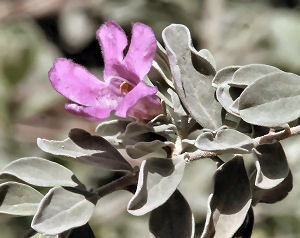
Texas State Native Shrub: Texas Purple Sage
Licensed under the Creative Commons
Attribution 3.0 Unported license.
Texas purple sage was named the official state native plant of Texas by House Concurrent Resolution and is not, therefore, listed in the Texas Statutes.
Only a few of Texas' myriad symbols were actually adopted by an act of the legislature and written into the Texas Statutes.
Sources...
The State of Texas. Texas State Legislature. House Concurrent Resolution No. 71. Austin: The State of Texas, 2005. Web. <http://www.capitol.state.tx.us/BillLookup/History.aspx?LegSess=79R&Bill=HCR71>.
The State of Texas. Texas Legislature Online. Texas Statutes. Austin: Texas State Legislature, 2005. Web. <http://www.statutes.legis.state.tx.us/>
Gilbert, Jeffrey. "With 40 sanctioned emblems and counting, lawmakers in Austin are keeping our states pride well-represented." Houston Chronicle [Houston] 01 May 2005, Section B, MetFront, 4 STAR Edition 1. Web. 20 Mar. 2012.
Additional Information
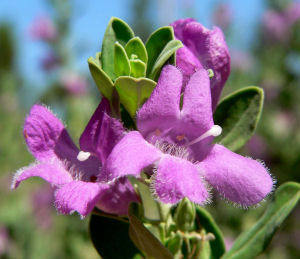
Texas State Native Shrub: Texas Purple Sage "Green cloud"
Photograph © Stan Shebs
Licensed under the Creative Commons
Attribution-Share Alike 3.0 Unported license.
Texas Sage, Texas Ranger, Etc.: Texas A&M, AgriLife Extension: Texas native plants database.
Leucophyllum frutescens (Berl.) I.M. Johnston: Lady Bird Johnson Wildflower Center, The University of Texas, Austin. Native plant database.
PlantFiles: Texas Sage, Texas Ranger, Silverleaf, Cenizo: Leucophyllum frutescens: Dave's Garden, an Internet Brands Company.
Native Plant Society of Texas: Official website.
Leucophyllum frutescens (Berl.) I.M. Johnst. Texas Barometer Bush: USDA, NRCS. 2012. The PLANTS Database (http://plants.usda.gov, 20 March 2012). National Plant Data Team, Greensboro, NC 27401-4901 USA.
Leucophyllum frutescens - (Berl.) I.M. Johnston, Texas Silverleaf: A network connecting science with conservation - NatureServe Explorer: An Online Encyclopedia of Life.
Leucophyllum frutescens (Berland.) I.M. Johnst.: Integrated Taxonomic Information System (ITIS) Here you will find authoritative taxonomic information on plants, animals, fungi, and microbes of North America and the world.
More symbols & emblems: Complete list of official Texas state symbols from NETSTATE.COM.

Trees, Shrubs, and Vines
of the Texas Hill Country
Jan Wrede
Trees, Shrubs, and Vines of the Texas Hill Country: A Field Guide, Second Edition, by Jan Wrede. 272 pages. Publisher: TAMU Press; Revised edition (January 18, 2010) If you imagine the Texas Hill Country solely as dry limestone slopes of cedar and scrub oak, prepare to have your eyes opened. The Edwards Plateau, upon which the Hill Country sits, is also a land of lush cypress-lined streams, diverse thickets, and shady hardwood bottomlands. Edged by canyonlands and intersected by creeks, these rocky hills support an abundance of trees, shrubs, and vines that provide food and cover for wildlife and create a distinct and durable landscape.
In this book, Jan Wrede has compiled a field guide to more than 125 species of mostly native, mostly woody plants of the Texas Hill Country. A thoughtful introduction discusses deer, cedar, water, oak wilt, and invasive species—timely issues of increasing importance for a growing number of Texas landowners. Plant descriptions contain information about the leaves, flowers, fruit, and bark of each plant and also give insights into the species’ range and habits. A color photograph accompanies each account.
Especially useful is a comprehensive plant chart with tips about color, scent, flowering period, height, site preference, and wildlife and livestock utilization. A recommended reading list, a resource guide, and a glossary round out this information-packed book.
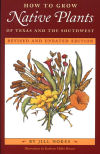
How to Grow
Native Plants of Texas
and the Southwest
Jill Nokes
How to Grow Native Plants of Texas and the Southwest: Revised and Updated Edition, by Jill Nokes. 624 pages. Publisher: University of Texas Press; Revised edition (May 15, 2001) Since its first publication in 1986, How to Grow Native Plants of Texas and the Southwes has set the standard for both home and professional gardeners. Written when the native plant movement was just getting started, it helped convert a generation of gardeners to the practical and aesthetic values of using drought-tolerant plants in southwestern landscapes.
In this new edition, Jill Nokes has extensively rewritten every section to include the latest information on the production, cultivation, and landscape use of native plants. She has added over 75 new species and updated the propagation and care information for the original 350 species of trees, shrubs, and woody vines. In addition to the individual plant descriptions, she also devotes whole chapters to gathering and storing seeds, seed germination, planting, vegetative propagation, and transplanting. With this wealth of clearly presented, easy-to-reference information, How to Grow Native Plants of Texas and the Southwest will remain the last word on this subject.
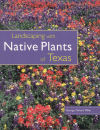
Landscaping with
Native Plants of Texas
George Oxford Miller
Landscaping with Native Plants of Texas, by George Oxford Miller. 192 pages. Publisher: Voyageur Press; 1st edition (April 7, 2006) This all-in-one guide helps you beautify your yard, not with high-maintenance imports, but with native plants adapted to your local growing conditions. Whether as a foundation hedge, mass planting, or accent shrub, native species can provide year-round beauty to your yard. While the interest in native-plant landscaping and xeriscaping has mushroomed, the necessary "how-to," "when-to," and "what-to" has been slow in coming.
In this comprehensive, richly illustrated guide, George Oxford Miller describes the best of the best. Covering wildflowers, shrubs, trees, vines, cacti, and groundcovers, the book selects the species that combine ornamental qualities, growth habit, adaptability, and year-round beauty for the highest landscape value. Chapters with photos, maps, charts, and design samples provide guidelines for species selection and planting, ongoing maintenance, landscape design, and water and energy conservation. Plant descriptions and photographs provide detailed habitat requirements for each and illustrate how each plant looks and responds to landscape conditions. New and experienced gardeners alike will find the facts and advice needed to choose the plants best adapted for their particular landscape design.
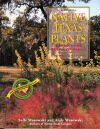
Native Texas Plants
Native Texas Plants: Landscaping Region by Region, by Sally and Andy Wasowski. 405 pages. Publisher: Taylor Trade Publishing; 2nd Edition edition (September 25, 2003) In this indispensable guide, you'll find landscape designs for every type of terrain found in Texas—from the Gulf Coast to the Panhandle, and from East Texas to West of the Pecos. This book also includes 21 landscaping design plans that are sure to inspire even the most traditional homeowner to go native.

